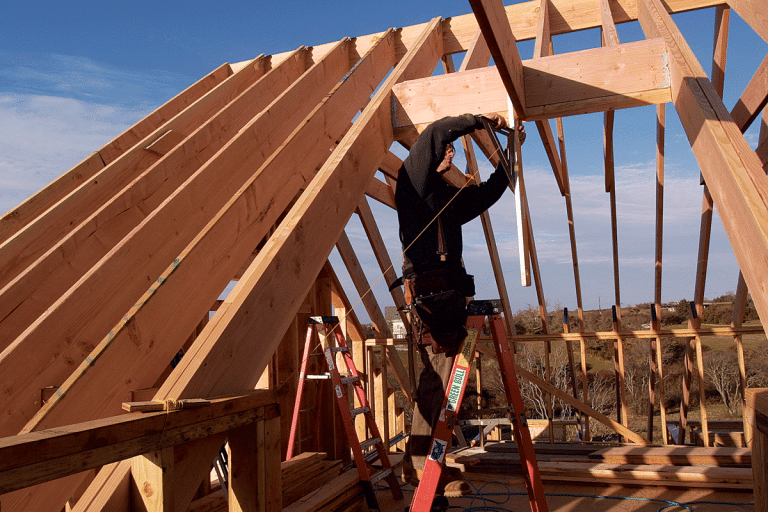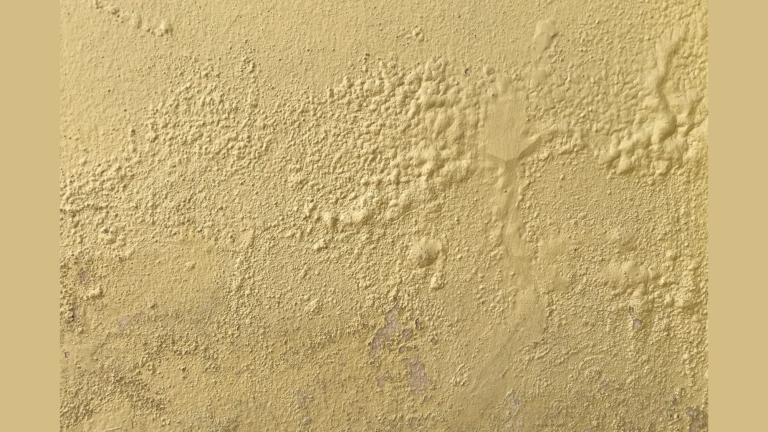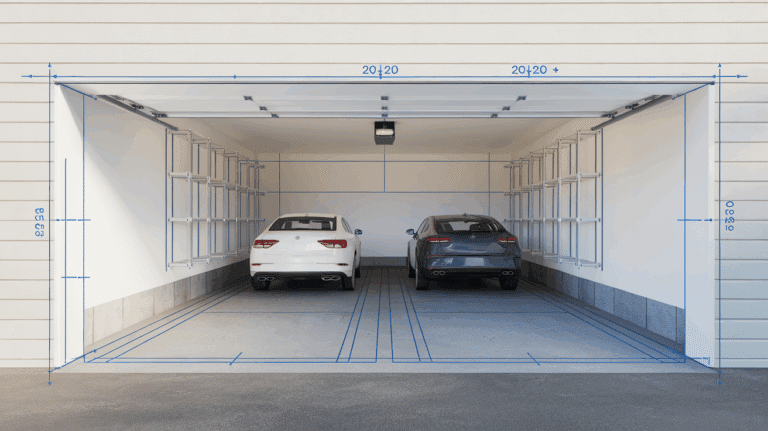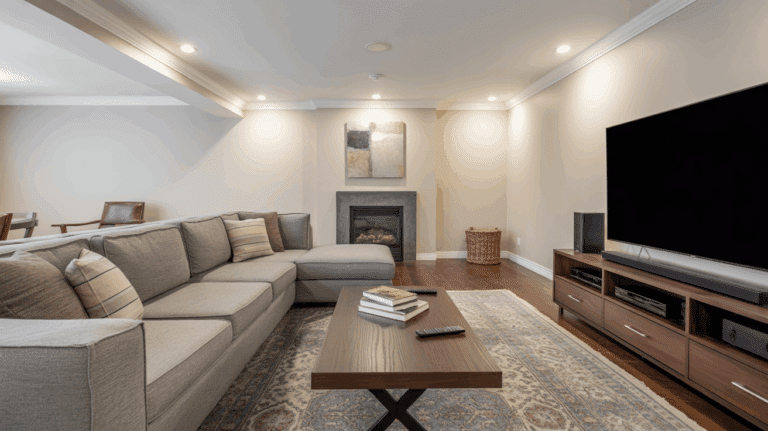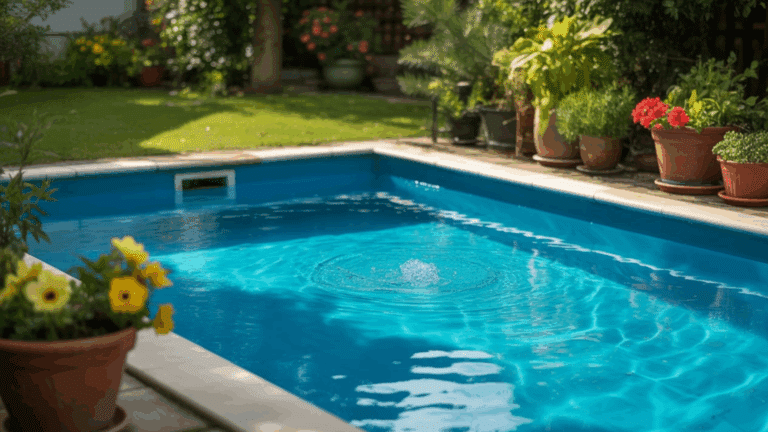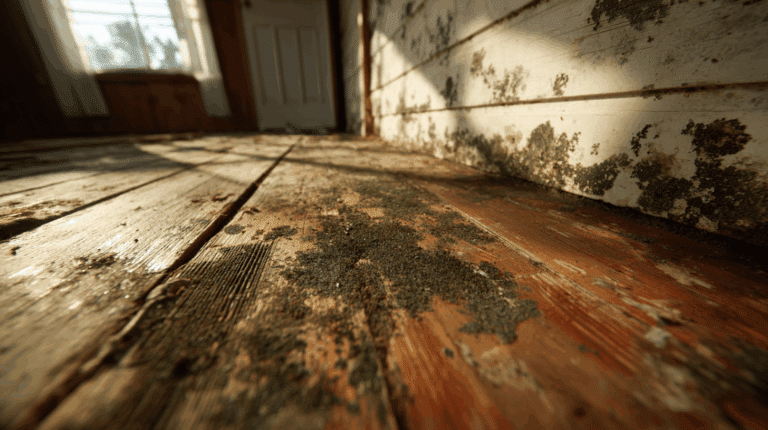Wood vs Vinyl Window: Which One Is Best For Your Home?
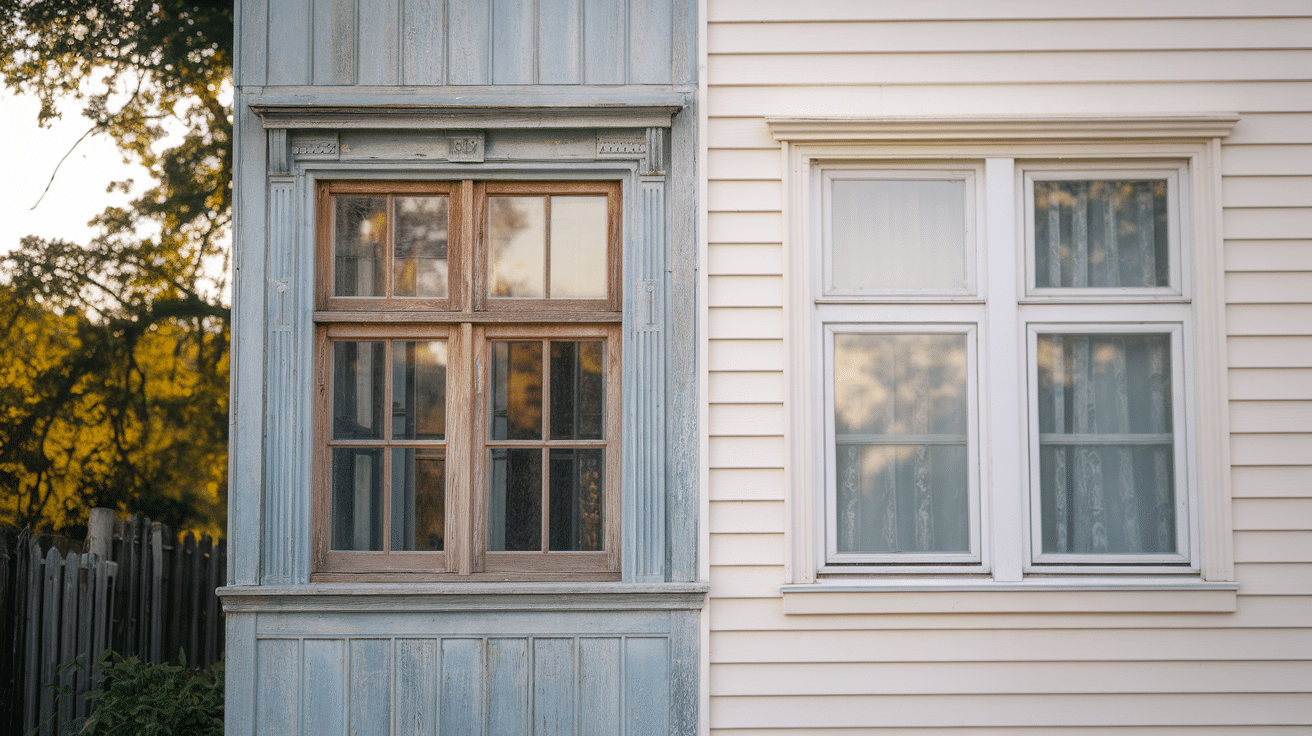
Choosing new windows for your home might seem simple at first, but the material you pick makes a big difference.
The two most popular types of window materials are wood and vinyl. Each one has its own style, benefits, and drawbacks.
Wood is often seen as traditional and decent, while vinyl is considered more modern and easier to care for.
We’ll look at how they compare in terms of style, strength, cost, energy use, maintenance, installation, and more.
If you’re remodeling, building a new home, or just replacing old windows, this guide will help you make the right choice.
What Are Vinyl and Wood Windows?
Vinyl and wood are two of the most common choices for home windows, and each has its own style and care needs.
Vinyl windows are made from PVC plastic.
They are budget-friendly, resist water and pests, and don’t need painting or sealing.
Most are sold in simple colors like white or beige, though they come in many styles such as sliding, casement, and double-hung.
Some models include foam insulation to improve energy savings and reduce noise.
Wood windows are crafted from solid woods like pine, oak, or mahogany.
They bring a warm, timeless look and can be painted or stained in any color. Many feature cladding on the outside to protect against the weather.
To avoid rot, warping, or insect damage, wood windows need regular sealing or painting, especially in humid climates.
Appearance and Customization of Windows
When choosing windows, appearance and customization are key factors that impact the overall style of your home.
Wood and vinyl windows each offer unique visual appeal and flexibility.
| Feature | Wood Windows | Vinyl Windows |
|---|---|---|
| Appearance | Classic, warm, and rich texture | Smooth, clean, modern look |
| Customization | Can be painted or stained in any color | Limited colors, usually white or beige |
| Style Suitability | Great for a traditional cottage | Fits well with most modern styles |
| Color Flexibility | Easy to change color over time | Hard to repaint the color after installation |
Durability and Lifespan of Wood and Vinyl Windows
The lifespan of a window depends heavily on the material.
Wood windows often last between 30 and 50 years, sometimes even longer with proper care.
To keep them strong, they need regular attention, such as sealing, painting, and checking for damage.
Without this upkeep, wood can rot, warp, or be harmed by insects and moisture, especially in damp climates.
Vinyl windows generally last around 20 to 40 years.
They are easier to maintain because they resist rot, pests, and water damage.
However, they are not perfect. Over time, strong sunlight or extreme heat can cause vinyl frames to warp, crack, or fade in color.
While vinyl requires less day-to-day care than wood, its overall lifespan can be slightly shorter.
Cost Comparison of Windows
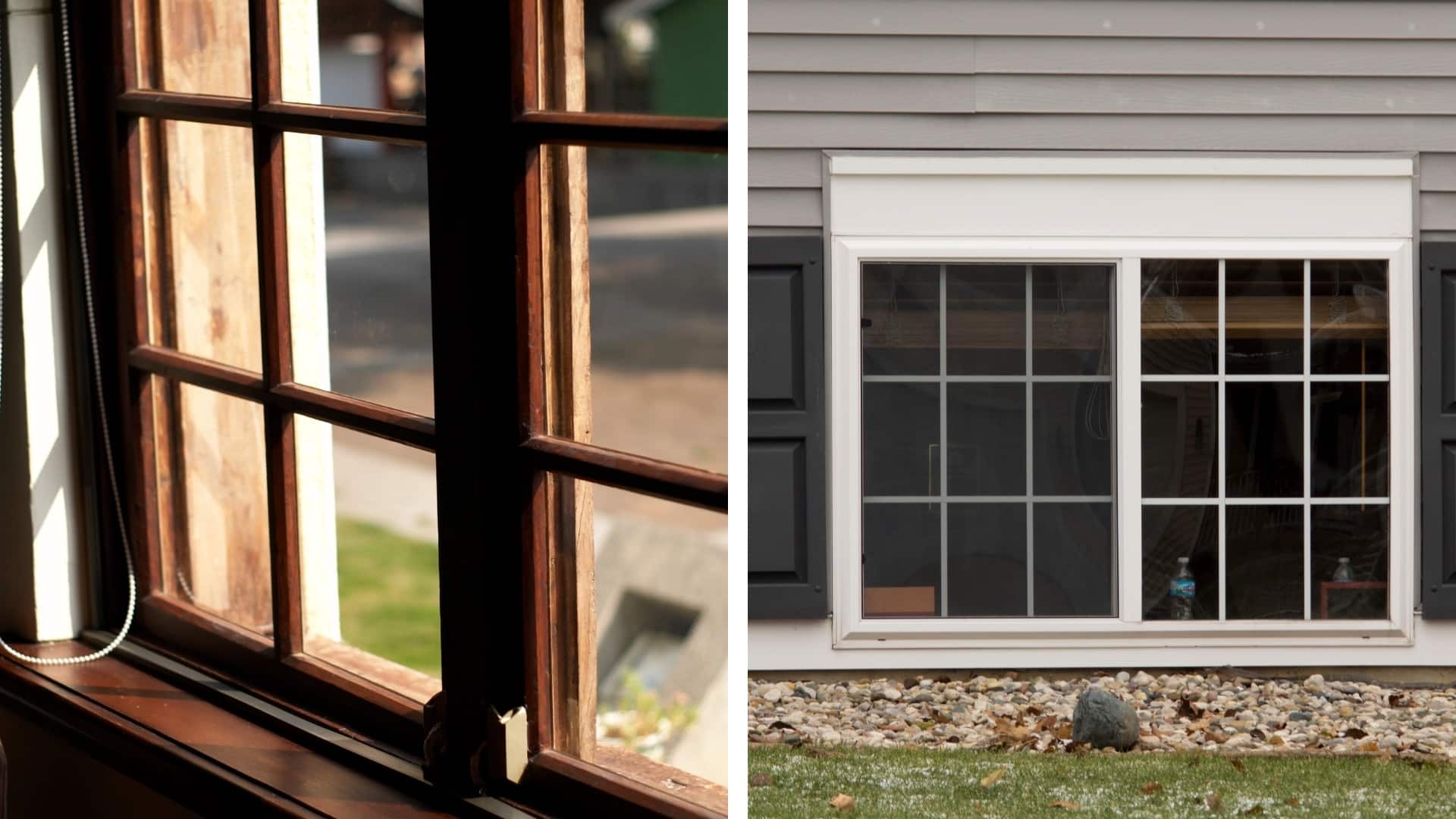
Budget is often a deciding factor when choosing between window materials.
Vinyl windows are usually the more affordable option, with upfront costs ranging from about $140 to $900 per window.
For a typical home with ten windows, the total cost, including installation, is around $7,700 to $9,800.
Vinyl is also easier to install and can even be a DIY project, which helps reduce labor expenses.
Wood windows, on the other hand, are more expensive.
Prices typically range from $260 to $2,000 or more per window, with installation for ten windows costing about $10,500 to $12,000.
Because they are heavier, they almost always require professional installation.
According to remodeling experts, vinyl windows offer about 68.5% ROI, while wood windows offer about 61.2%.
Maintenance Requirements for Each Window
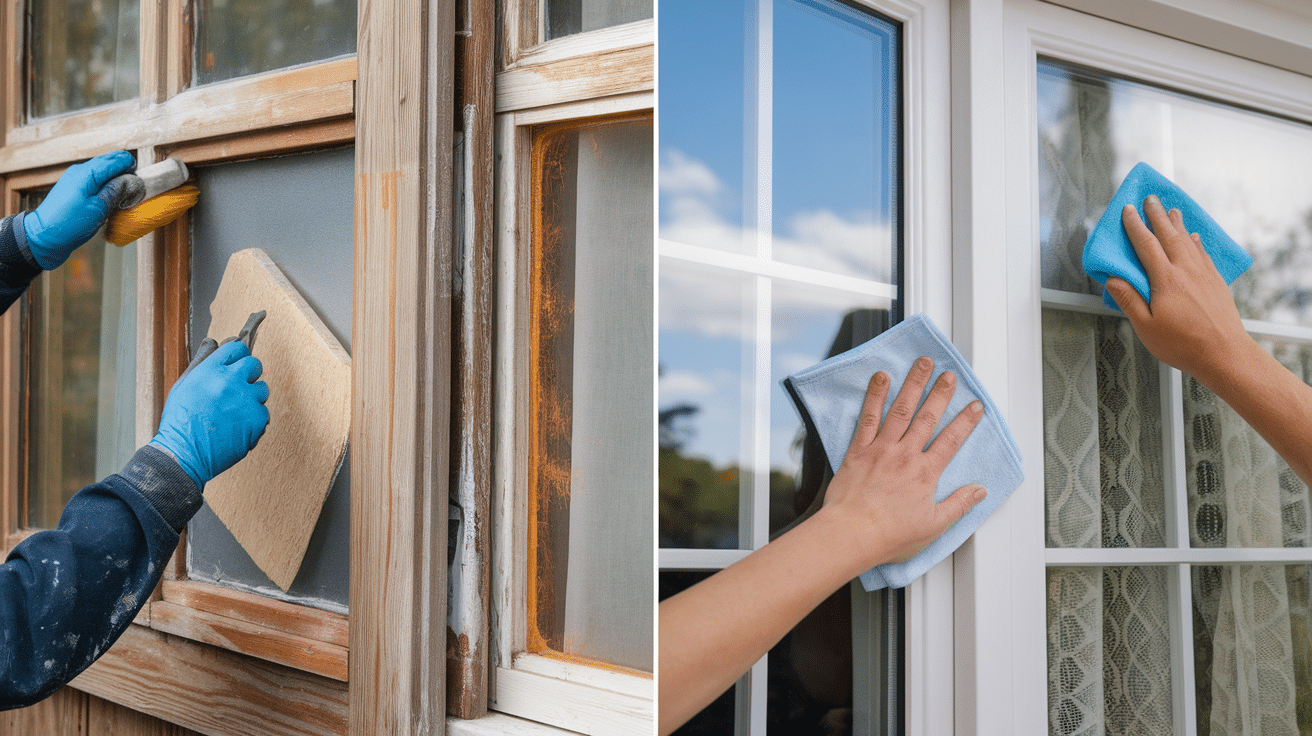
One of the biggest differences between wood and vinyl windows is the level of care they require. Each material has its own needs to stay in good condition.
Caring for Wood Windows
Wood windows look beautiful but need regular upkeep. To keep them strong and long-lasting:
- Paint or stain them every few years to protect against water and sun.
- Inspect for cracks, rot, or insect damage and fix problems quickly.
- Sand, fill, or refinish scratches and chips to restore their appearance.
- Reseal joints and edges as needed to block out moisture.
Caring for Vinyl Windows
Vinyl windows are much easier to maintain. To keep them looking fresh:
- Wash frames with soap and water when they get dirty.
- Avoid harsh cleaners that might damage the surface.
- Check for warping or cracks, especially in very hot climates.
- Replace frames if damage is severe, since repairs are often difficult.
Proper maintenance ensures your windows not only look good but also last as long as possible, no matter which material you choose.
Which Type of Window Is Best for Your Home?
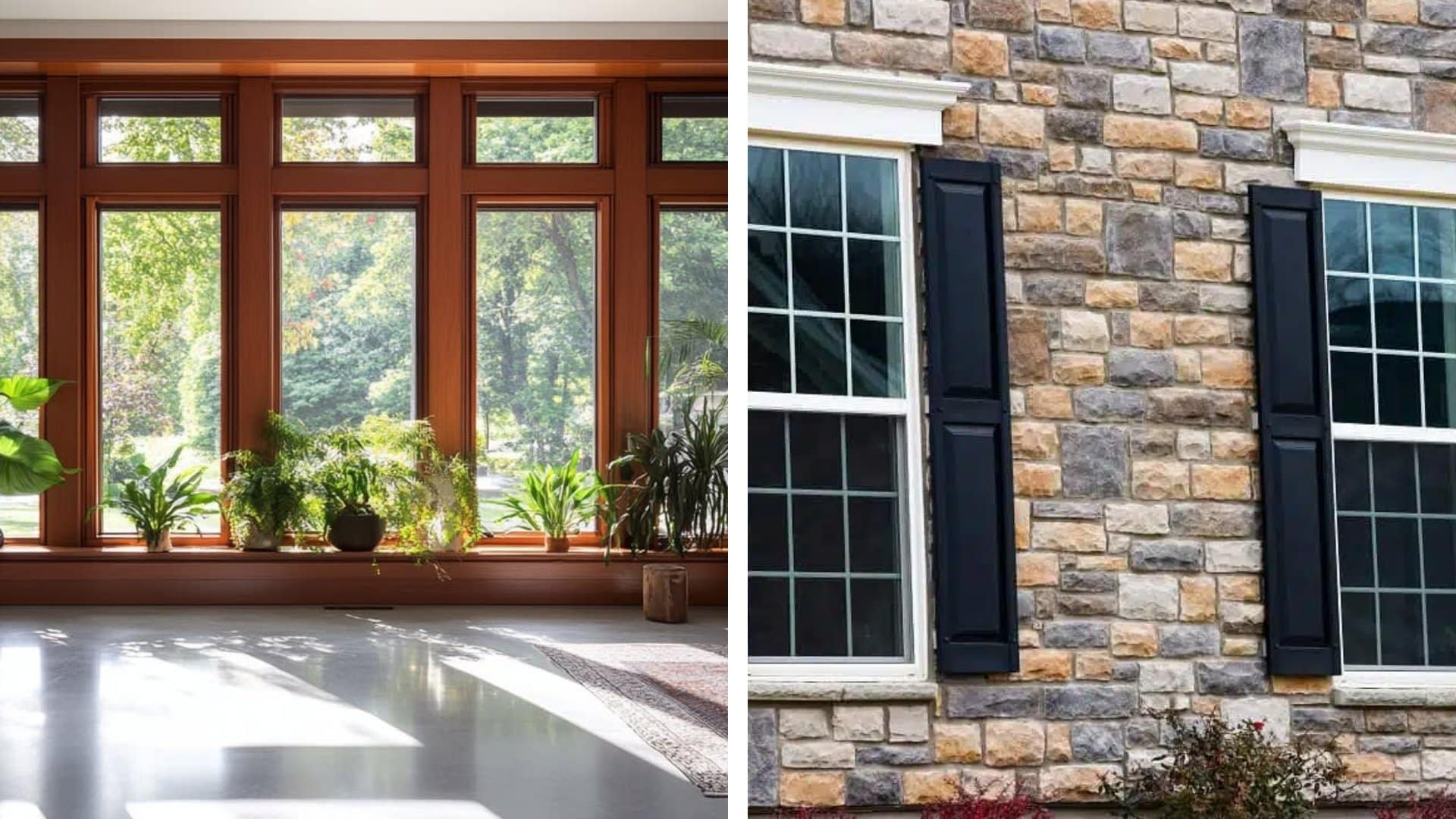
Deciding between wood and vinyl windows comes down to your home style, budget, and how much maintenance you are willing to handle.
Wood windows are the right choice if you want a classic, natural look and don’t mind putting in regular upkeep to preserve their beauty.
They are especially well-suited for historic or high-end homes where craftsmanship matters, and they provide excellent insulation, though the upfront cost is higher.
Vinyl windows, on the other hand, are ideal if you want to save money and prefer a low-maintenance option.
They are easier to install, sometimes even as a DIY project, and perform well in humid or rainy climates since they do not rot.
Your decision depends on balancing charm, cost, and convenience.
Additional Considerations
Beyond appearance, cost, and upkeep, other factors can also guide your choice between wood and vinyl windows.
Here are some key points to keep in mind:
- Environmental Impact: Wood is renewable and biodegradable, especially from responsibly managed forests, while vinyl is plastic-based, non-biodegradable, and can release toxins if burned.
- Climate Suitability: Wood works best in mild, dry areas but needs extra care in humid regions, while vinyl resists water and rot yet may warp or crack in extreme heat or cold.
- Security and Noise: Both types can be fitted with secure locks and insulated glass, offering good noise reduction with double or triple panes.
- Energy Efficiency: Wood naturally insulates well, while vinyl often includes foam insulation for better energy savings.
- Design Flexibility: Wood can be stained or painted in any color, while vinyl offers limited finishes that are harder to change later.
Considering these extra factors can help you choose windows that not only match your style but also perform well for your lifestyle and environment.
The Bottom Line
Choosing between wood and vinyl windows depends on what matters most to you, whether it is lasting style, easy care, or saving money over time.
Each material has strengths, and the right decision is the one that matches your home, your climate, and your budget while offering the look and comfort you want.
Windows are more than frames for glass; they are long-term investments that shape the way you live and feel inside your home.
What window choice do you think is best for your home? Tell us, share with us in the comments below.

